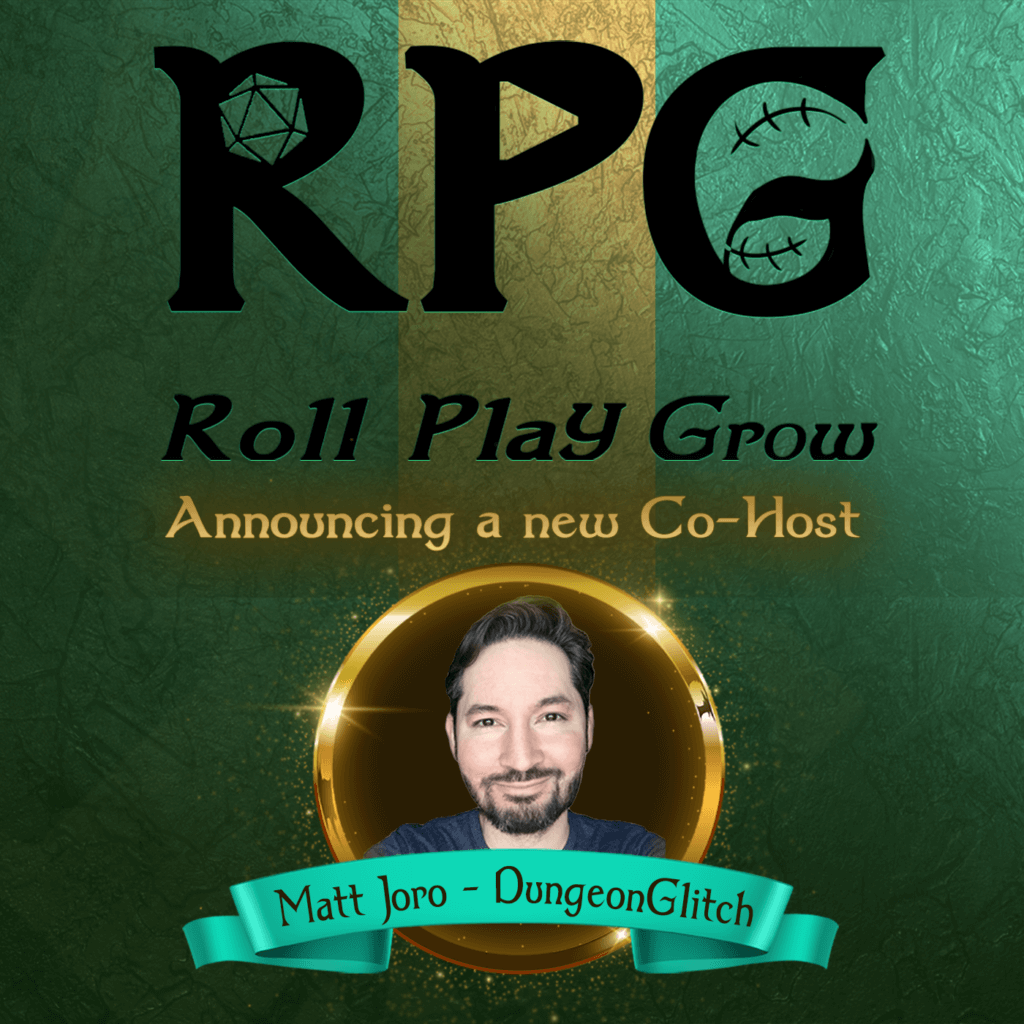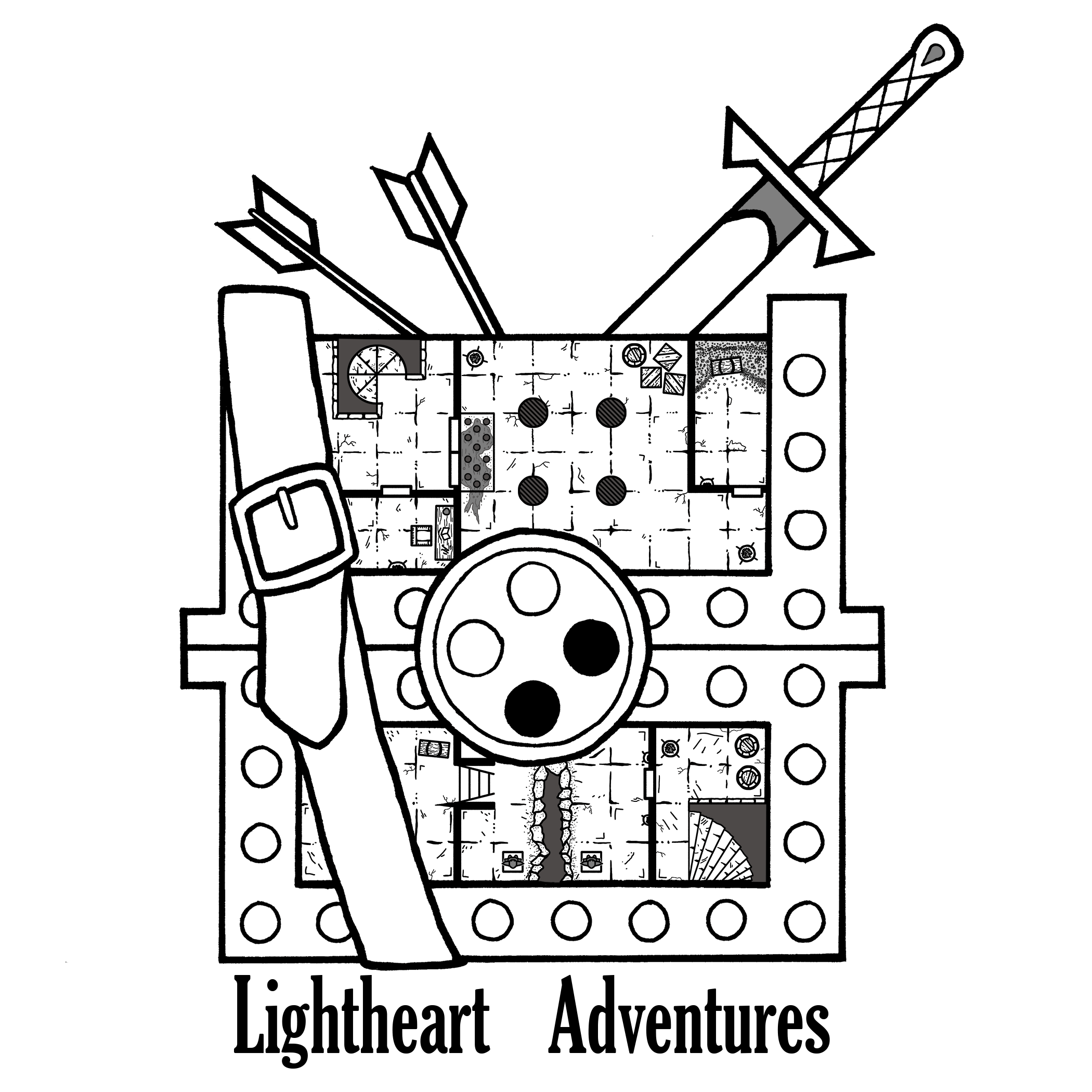Ready to stop aimlessly scrolling through social media and start building a thriving online community? This episode is for you! I am joined by my engaging new co-host, Matt Joro, and we’re ready to tackle the dynamic world of social media. We’ll share insights on the unpredictable algorithms, increasing ad costs, and if those age-old Twitter tactics are worth a second look. As we navigate the challenging digital terrain, we’ll discuss the importance of staying ahead of the curve and predicting the next big platform.
What if you could tap into the secret of creating magnetic content that turns casual followers into engaged community members? We’ll break down how to identify your audience, understand their interests and behaviors, and locate their digital hangouts. From determining the right type of content to the perfect posting frequency, we’ll guide you on enticing user-generated content and striking a balance between educational, inspirational, and entertaining content.
This episode is about more than just gaining followers; it’s about building a community. Join us on this exciting conversation!
This episode was edited by Sam Atkinson.
Disclaimer: This post contains affiliate links. If you make a purchase, I may receive a commission at no extra cost to you.
Download & Subscribe
Amazon Music | Spotify | Apple Music | Stitcher | RSS Feed
Buzzsprout | Apple Podcasts | Spotify | Google Podcasts | Amazon Music | Stitcher | TuneIn + Alexa | Podcast Addict | Podchaser | Pocket Casts | Deezer | Listen Notes | Player FM | Podcast Index | Castro | Podfriend | Podbean | RSS Feed
Time Stamps
- 00:00:30 Announcement time!
- 00:03:22 Social media & where do you go
- 00:07:41 Building a Following vs building a community
- 00:14:08 Create and Engage With Targeted Audience
- 00:21:16 Steps you can take to start
- 00:32:11 Wrap-up
Find Matt
Show Affiliates / Some of Courtney's favorite things
FloDesk Easily create gorgeous emails. Get your 1st month free & 50% off for your first year.
Found Familiar Delicious coffee meets Dungeons & Dragons artwork. Use code lightheartadv for 10% off your order.
Friday Afternoon Tea Grab a cup of tea with blends based on your favorite nerdy series. Use lightheartadv for 10% off
Dice Envy creates beautiful dice in a variety of materials. Use lightheartadv for 10% off your order
- Buzzsprout is my fabulous podcast host! Try it for free & receive a $20 Amazon gift card if you sign up.
Transcript
Courtney:
Hello and welcome to Role Play Grow, the podcast for tabletop entrepreneurs, creators and fans. In this show, we dig into processes, challenges, tips and really look at how to grow a business in the tabletop role-play gaming space. Sit back and join in as we learn from the creators behind your favorite brand about who they are and how they are turning their passion for gaming into a career. Hello everybody, I’ve been teasing you for a little while that there are some changes coming to Role Play Grow and we are finally here. I am thrilled to introduce my new co-host, Matt Joro, aka Dungeon Glitch, who will be joining me every other episode for a deep dive into business topics. Don’t worry, I’m still going to be interviewing all of your favorite creators, but I felt that it was time to really dig deeper into the core of what I want the show to be: a tool that you can use to help you start or grow your own business within the TTRPG space. With Matt’s seriously large range of experiences, I felt that he was the perfect fit to help me really get into these topics. If you haven’t listened to it yet, be sure to check out my initial interview with him back in episode 69, and I think that you’ll see why I am delighted to have him as my co-host. Hi, Matt.
Matt:
I forgot that was the number we had.
Courtney:
Yes, I know, every time I’m like, yeah, yeah, it is.
Matt:
I’m super happy to be doing this. It’s a real passion of mine to help people make money with their passions. It’s funny because when you help people make money, you always have a job. I love it. I absolutely love it. I have a lot of experience with helping people do exactly that. It’s just on Twitter, on the socials. I just can’t get too far into it because everyone has these different issues at different levels. Some people have different experience, some have very nuanced questions that I can’t go too far deep into and I also don’t want to blow up my DMs. Yeah, if we can cover some topics here, get some people on their footing, I’m all for it.
Courtney:
Obviously, this is going to evolve as we do more of these and our listeners are like oh wait, this is happening now. Essentially, we’ve got a couple of different topics that we’ve identified, some of which might span several episodes. Honestly, this first one that we’ll get into in a minute. As we do this, we’re going to have opportunities for you guys to let us know what you want to hear about, what you want to learn about, and we can start doing some deep dives. We do intend for these episodes to be a little bit shorter, so typically, the interviews that I do are around an hour long. These are going to be shorter, bite-sized things. Give you guys some tools that you can take notes if you really want to, but, either way, just be able to move forward with some ideas that we go into. For the very first one of these episodes and, frankly, probably for a few more, because this is a large topic to get into we wanted to dive into something that’s pretty topical, which is social media, growing your social media accounts, figuring out where the heck do you even go now that Twitter’s been imploding?
Matt:
Yeah, this is the topic everyone everywhere is dealing with. All the large companies don’t really know where to go, especially since Twitter is, you know, imploding is the right word for it. It immediately lost a ton of advertisers. Advertisers didn’t know where to go. They didn’t have anywhere else to go. As a result, anyone who is a media buyer which means you purchase ads on different things you’re seeing, probably, spikes in cost because people are allocating their budgets into different platforms. So you’re seeing that on YouTube. You’re seeing an overhaul on ads on Reddit, which, if you’ve been following that, is its own little dumpster fire. Yeah, so waiting for these other two platforms and when they begin to monetize, it’s actually an event I’m very excited about. I know everyone is kind of enjoying this. It’s not like a honeymoon phase, with everyone joining threads and everything’s chill and non-monetized and just free. It almost feels like college, you know. It’s like you can just hang out. You get to know people. Things are cool. There’s no consequences for a lot, of, a lot of actions, but sooner or later you’re going to need a job and that’s when the monetization kicks in and we’re going to see just what the feed looks like, how the algorithm will be allocating news topics, if it even does Some people are saying that it won’t do any of that and seeing if any of these old Twitter tactics will still work of you know, you make a post and you put your link in the second post. See if you can sneak it past the algorithm or if you have to actually pay for it, because if you do, that’s good and bad. So I guess we’ll find out together. I don’t know what’s going on with Blue Sky, because it’s very slow in this development and everyone I know half of them have codes, half of them don’t, and I don’t know. I think they stopped sending codes. So that’s where we’re at right now. On July 14th, I’m sure it’ll be different tomorrow.
Courtney:
Yeah, I know it’s interesting, Like it’s just a couple months ago. It was like, oh, it mastered on and hi, but now we’re like ooh, threads in Blue Sky. It’s just, it’s kind of exhausting you know, trying to figure out, like okay, well, now I have to reestablish myself somewhere else. Like okay, but all of these places, which one is actually going to come out on top?
Matt:
Yeah, the internet, all this technology, it’s all in serious flux and it’s moving so quickly. Like I was just having a discussion about one of a project I was working on not even too long ago, I have to immediately recognize that it was before chat, gpt existed, which is like April. It’s only been like three months and it’s already taken over everything.
Courtney:
And oh my God, has it really only been that long.
Matt:
Yeah, it feels like it’s been a lifetime and it’s like, oh boy, good Lord.
Courtney:
Man keeping up with anything is just hard right now.
Matt:
Yep. So fortunately, for anyone who is tackling one of these social networks, the social media platforms, and you wanna figure out what to do with your brand, there’s some good and bad news. If you were big on Twitter, suddenly Twitter doesn’t work anymore. Are you still big?
Courtney:
Are you?
Matt:
for those people who didn’t succeed on Twitter, do you have a chance to outrun some of these other previously larger contenders on this new app? I don’t know. Building people’s following it seems to be what everyone is obsessed with right now, and they’re not wrong. There’s just better ways to do it. So we’ll get into that.
Courtney:
I mean, honestly, I think that’s a great time to get into that. It’s like, regardless of which platform you target, like the advice that you have for us today, matt is gonna help regardless of where people wind up. So I think that it would be a great time to just get into.
Matt:
Let’s talk about like a following versus a community, sure, so everyone sort of understands it, and we actually I’m pretty sure we’re gonna title this for the following, because that’s the buzzword that everyone seems to seek. That’s the one everyone wants. Everyone’s like oh, how many followers do you have? How many people are actually following? That’s what that means. So what I’m saying is you don’t need followers, you need a community. So it’s a little bit of a bait and switch right here, I apologize. So the difference between followers and a community, a social media community is a group of engaged, interactive individuals who share a common interest or passion. Unlike followers, who might passively consume content, community members are more likely to actively participate in discussions, share content and form connections with each other and the brand. Now I say this a lot followers is a vanity metric. If you have a ton of followers, it looks cool, but if no one engages with your brand, you essentially have absolutely nothing. And that’s why, if you’re in the position right now where you can build, either, I’m gonna say build a community.
Courtney:
You can’t see me, but I’m definitely nodding along. Yeah, it’s true, because just because you hit those milestones on, like oh, I’ve got a thousand followers, I’ve got 5,000 followers, like, how many of them are you actually engaging with on a regular basis? Like how many of them are commenting on new things? You know, how often are you commenting on their things? You need people that are actually engaging with your content, because otherwise it just feels like you’re screaming into the void.
Matt:
Yeah, I’m gonna say something that I think a lot of the big people on Twitter are going to be a little upset about this being revealed. But the majority of people with large followings you gotta kind of assume that at least 70 to 80% of those numbers are either dead accounts, bots, people who signed on and left, or they’re just like lurkers. These are people who aren’t interacting with all these things. So if you see one of these large accounts even mine it was always like, yeah, I had 14,000 followers. I think it’s now at like 13.8, but anytime I posted something, I didn’t end up with 14,000 likes. It doesn’t work like that. I would average somewhere around 100 to 200. And that’s very great if you have an engaged audience. If you have 14,000 or anything like that and you’re only getting like one or two, you don’t have a following. No one’s seeing your stuff, no one sees any value in it. It’s not going anywhere. So you might as well have zero followers just to beat that dead horse. I’m very passionate about that. I’ve seen so many people just be like I gotta buy followers or I need bots to load my numbers, or hey, follow me if I follow you back and I’ll never talk to you again and it’s like it’s that kind of stuff and I see so many people everywhere Just about it and it’s it’s to be fair. It’s if you’re if you’re new to Twitter, it’s not your fault, because places like Instagram reward that sort of stuff. The way Instagram used to work is if you wanted a business account, if you wanted some of the Swipe and click ability, you needed to have 10,000 followers. It was the minimum. So people didn’t care where they came from and it didn’t even matter because there was no interaction. You didn’t really need an engaging Comment section Most of the time. Now you can do, but as a result, people were just kind of like hey, follow me, follow me, I’ll follow you back and we’ll get closer to 10k. And it just went around like that. On Twitter, you see people showing up for the first time and TtdokBG, people hate that stuff. It’s also kind of my fault, because I was also yelling at people for the last three years to hate that stuff.
Courtney:
When you’re a pillar of the community.
Matt:
Yeah, you can kind of. Hey, we hate the same things, right? So that is a difference between followers and a community. And again, you know if you’re still confused while followers represent the number of people who have chosen to receive Updates from your account, a community implies a deeper relationship. Now, followers may simply consume content, but community members engage, interact. I feel a sense of belonging. These are the people who are going to push your brand. An active and engaged community can serve as a loyal customer base, a source of valuable feedback and powerful word of mouth marketers. So if you’re trying to do all this stuff for free, a community is the holy grail and you can do this. Anyone can do this. Having a community Means like. These members are more likely to purchase products. They recommend them to other people. They’ll stick with your brand in the long run. They make it more fun. You, you log in. You have people who love your stuff. Anytime you post something, you get to celebrate with them. It’s amazing. You’re hanging out with people online who genuinely like your product. It’s awesome.
Courtney:
Hey, entrepreneurs, I love introducing you to new creators every episode, but I could really use your support. I would love to invite you to join our patreon page. We will gain access to behind the scenes content. Add your questions to upcoming interviews and you could even receive a shout out on our site and an upcoming episode. To learn more, go to lightheartadventurescom. Slash RPG. And now back to the show. So I’m sure that people are thinking at this point Well, yeah, that sounds great, matt, but like, how do I even do that?
Matt:
Okay, how to start a community. It’s first. It’s not necessarily a where-do. What steps do I do to get numbers up? First you have to plan. You need to first understand what it is you want. You have to know who your target audience is. You can’t just grab everybody. You have to find out what kind of person is going to enjoy the content that you plan to put out things that match your product, your brand. You’re in TT RPG, say, your dungeon master, or something like that. Do you want to communicate to other dungeon masters? Are you trying to teach people who are players to have a good time? Maybe you’re like me and you sell to both. Or you try to make things to People who are otherwise trying to make money because, like I, while I can make stuff for both of those people, my own brand is working towards People who are trying to monetize their hobby. Now, obviously, because of when I put that kind of stuff out, I can’t just be like hey, normal player who has no Goals of ever even being on camera or doing something like they don’t care. So by narrowing down what your intended audience is, this is going to set the framework of what your content should be about, once you know who your ideal audience is, you want to start identifying their interests, their behaviors and, most importantly, where they are like. If you know that the majority of the people that you are trying to seek Are on Facebook, then maybe you shouldn’t be on threads. It’s also difficult because it’s a toss-up of Whether or not you can find the people that you relate to most and the platforms that you’re most familiar with. If you find that you’re usually alone on topics in a certain place, try other places, and it’s difficult because, like if you’re not comfortable with those spots, you might have to start getting out of your comfort zone and trying to make new accounts to find your tribe. Once you have Located where you’re going to be, then you know the type of content you’re going to make. If YouTube is it, then you’re making videos. If it’s tick-tock, if you need reels, that sort of thing, as opposed to being on blue sky Twitter threads. That’s more conversational and and that will also determine the pace of your content as it comes out. So once you have that, you can start setting those goals Per your brand. You need to understand what it is that you’re actually trying to put out. So if your goal is to hey, I want to boost my awareness. I’m trying to sell something, I’m trying to teach people. Maybe I just put something out there because I want feedback. By clarifying your goals, you can guide your community to welcome and accept these messages. So if you sell stuff, they can be tuned into. Hey, when’s the next release? I’m trying to learn something. Oh, here’s a question we have. They’ll know, to prompt us and this is the relationship you’ll build with them over time. But by setting it in the foundation right now, then you’re not going to confuse people later. That’s the important part of starting out before you’ve typed anything. So now that you have your goals, I can hear people again saying you know how, where are we going? So okay, say you know where you’re going. You know the platform, you know here speaking to you, know what they want to hear and you know what you want to say. You want to share your relevant and engaging content regularly. This is your pacing. So regular content keeps your brand at the top of people’s mind and it encourages continuous engagement. Again, you want to get conversations. You’re trying to build a community and you’re not just projecting. You don’t want to just be posting things and dropping them and again, the term regular will vary per platform Find successful creators that you admire in these spaces and see how often they post. If you’re on Twitter and that sort of thing, you got to do something at least once a day. It could be even every couple of hours. I always go by like a rule of thumb of eight am noon, four pm, eight pm, 11 pm Eastern. That worked for me. I don’t know if it’s going to work with that way on threads. That’s something I have to test. So these are the sort of data, the metrics, that you can hope to find as we go, and I’ll touch on that again. But once you know that pace, it’s also going to be important to find a pace that you’re actually comfortable with, so that you’re not burning out, because if you burn out and stop entirely, then you failed. So one cool thing, too, is when you, when you, when you start speaking to other people more regularly. Regularly, you can encourage user generated content and this can look like running a character of the month contest or fans getting fan art, that kind of stuff, and that helps bring people in. That’s always that’s something fun that I actually really like to do whenever possible. I kind of do that in my discords. Another option is to provide a mix of educational, inspirational and entertaining content. If you can’t do either one of those, then your stuff might not be seen, because really content is less about what your content is and what it means to the people who see it. How does this help me? What am I learning here and my? How does this affect my life, my world, my game, my brand? If you provide things that are interesting to people, solve problems, teaches them, inspires them, makes them laugh, makes them forget about their day for a split second, makes them smile, you’re going to get noticed. This is how you turn basic followers into engaged community members. When you’re consistent with this sort of thing, they come to expect it. They start to form a relationship with you. They will miss you if you stop, and that’s what you want. It could be something like hey, make tutorial videos for beginners highlighting positive stories from TTRPG community. That’s inspiration. You share things from your games because that can be entertaining. Yeah, so still, if you don’t know what to make, you still have a target audience. Make what they want. You have to speak with them, ask them, and this is market research and they are your market. So it’s important to hear the people that you are trying to sell, to advertise, to welcome to your brand, to your show, to your Kickstarter.
Courtney:
I feel like it’s important that you’re not just like making your posts about yourself, but like you’re actually going and looking into, like, what are they talking about? Like, how can you engage with them? You know? Like, what kinds of things can you see? Like, oh, they’ve, you know, maybe replied to other tweets, or people were asking for, like, a photo from your game or a photo of your pet, and so you can be one of those people asking for that stuff too. To break up, a little bit.
Matt:
Yeah, I’m really trying to not make this sound like an audio book, because I’m also and I’m, and I’m like I’m so tempted to just go in tangents because it’s like all these stuff is like I want to add more here. I want to go into this. It just reminded me of like a quick hack. So if you’re starting out, you want to get from zero to a thousand followers and you want these people to matter. You want them to be like actual cool community people that support you. What you can do and this is actionable right now First pick one main topic that you are about and then split it up into five sub topics and then this is what you’re going to talk about regularly. This is going to be your brand. So, say you’re a dungeon master. Five topics can be, let’s say, opinions on maps, right. Then how to use monsters, where you get your ideas for your campaign, fun stories from your campaign, and then say, maybe dice you like. Now these are your five things that will help you stay on track. I’m sure everyone’s going to have a ton of other ideas and that’s fine, but limiting it to five will also help your audience know what to expect, because if again, if you’re all over the place, then you dare not really following you for any specific reason, cause it’s like, if you have hey, here’s my great dungeon idea. Hey, here’s my recipe for barbecue ribs. That’s different. It’s like, yeah, you can make it, that can be an amazing recipe and I might follow you for that, but if you want to talk about D&D, I might go elsewhere. So keep it consistent like that. Once you have those five ideas, make a 30 day content chart. Now I know people are going to be like oh, I want to start posting immediately, and you can, but also take a couple of hours, open a spreadsheet and just work on 30 days worth of content involving these five topics that you’re about. So one it’ll get you more used to thinking of these things in terms that you’re trying to make content with. Again, if you are using something like YouTube, it may require more video work. You might not need 30 days or 30 videos mapped out, but it also never hurts to do that. But if you’re on Twitter, then these ideas burn quick and you’re gonna fly through them and the last thing you want is to be like stomped on a topic and I don’t know what to talk about. It’s Monday, what’s happening, but you pull up your chart and you go oh well, right, I forgot about that one. I can run that one. Or, now that you have this list, even in general, once you stop or you’ve completed it all, you can start subverting some of these ideas. You now have what they call, in marketing, a swipe deck, and can start just pulling ideas from, twisting ideas, combining ideas, and then, once things change, as conversations alter, you can apply any of these, any of these things you’ve listed here, to what other people are talking about, and it’s going to keep you in the wheelhouse of what your account is known for. So you now have this consistency of topic and consistency of your pace, and that’s all you need. Success isn’t about being one and done. It’s doing the monotonous and the basic stuff over time. So if you can just keep up with this, you’re gonna be all set. The last hack I’m gonna recommend here is to also connect with 50 creators. That doesn’t mean spam people until they’re your friend. So networking You’re in this space. You’re trying to grow. You’re not the only one here and you’re not the first and you’re not the last. So everyone’s building a community. There’s the vast community that is everyone here, and I know people don’t like the word community, but your space is a community if everyone talks to each other, especially if it revolves around you, because you’re building your own community. There is a dungeon glitch community. There are people who will talk about my stuff when I’m not around. That’s my community. It doesn’t have to be the TTRPG community. It doesn’t have to be D&D or anything like that. These are my people. This is the space and you want this too. You are a part of the overall TTRPG network. Pick out 50 people that you like, relate to respect, want to emulate and find out what they’re about. Comment down there posts, be genuine. Your idea here is to make friends and not spam, not love, bomb, nothing weird, just network. Keep it professional. The cool thing about making friends in TTRPGs you’re probably gonna play a game with them, and the more you do this, the better friends you become. But try to make friends with 50 people. If you do that, all of this gets amplified and they’ll start sharing your things and you should do the same. So boost them as well and people will see you helping other people, because this is something you should want to do, and eventually you will hit a thousand followers pretty quickly. Again, don’t spam, don’t anger people. That’s the opposite of what you want. If you get the reputation of being the annoying spammer, your community is going to be very small and probably hated. So don’t do anything that annoys people, but go out there and just make friends. People say I don’t like making friends. All you have to do is show up on someone’s post. Say something nice. If someone has a problem, like something that needs to be solved or answered or wants an opinion, answer it. People like when people help people. If you have that expertise, go for it. If you don’t know it and you can find it, research it and explain what you found. If you see a joke that people are enjoying and you can add to it in a funny way, you have that ability. If you’re funny, go for it. You’re just part of a community. You’re part, you’re at this giant party. Just talk to people. That’s what this is for. These social media apps are communication. They’re conversation apps. You have to converse.
Courtney:
I think that we’ve got a lot of homework for our listeners right now. Yeah, I mean we are gonna keep digging into building a community for the next couple of these episodes, but I wanna do a quick little recap of steps that y’all can take over the next couple of weeks until it’s time to dig into a little bit more. We’ve got about, really. The first thing that you need to do is define your community. Who’s your target audience? Where are they right now, especially as everybody’s jumping around? But once you start to do that and start to find it, you can figure out what type of content you wanna make. Is it YouTube? Is it TikTok? Is it posting a whole bunch on whatever winds up being the ultimate Twitter replacement? Anything else?
Matt:
So, yeah, once you’ve narrowed down your audience, it’s essentially, start posting regularly, get your content out there. If you can work with the community to help you make content, which could be, you know that user-generated content. Working with the people who like you hey, name this creature, what does this look like? Here’s a prompt, that sort of thing and then, at the same time, try to educate, inspire and entertain. If you can do those three things any one of those three things you’re likable and you’re helping people. And then there’s the quick hacks of get your ideas, write them all down, make friends. If you do that, you’ll hit a thousand followers. You know, I say this a lot. You don’t need a million followers, you need a thousand loyal ones. That’s all you need. That’s it. So next time we can talk about what happens when everyone is engaging. So you have a great community, everything’s bumping. Now what?
Courtney:
Yes, and I honestly think that’s like a great stopping point at this juncture for those very first of these like episodes. So, yeah, y’all’s homework is to start thinking about your community, you know, and start making some posts relevant to them, and then, when we come back in two weeks, we’ve got a lot more great advice from Matt on how to foster engagement, how to interact with them, how to collaborate with. You know some other people that might help you out a little bit, like brands and influencers, and really just a whole lot more stuff.
Matt:
How to really have fun with it. I’m excited. I love all this stuff.
Courtney:
Awesome. Well, thank y’all for checking out this first of the new episodes that we’re doing at Roleplay Grow. Next week, we will have another interview with someone very special, but then a week after that, matt and I will be back here continuing this discussion about social media.
Matt:
Thank you so much for hanging out with us and best of luck with building your audience. And again, if you’re starting out, this is the perfect place to begin. If you’re going now and you have an audience, you can always do this stuff again.
Courtney:
Thank you, guys. If you have any comments about what we talked about today or questions that you want us to address in a future episode, feel free to hit either of us up on. You know, I’m used to saying on Twitter.
Matt:
Yeah right.
Courtney:
I mean, we’re still there.
Matt:
I don’t even think you can DM on threads.
Courtney:
So yeah.
Matt:
Twitter, kinda.
Courtney:
So we’ll give some options depending on where anyone is on the day that they listen to this.
Matt:
You can email me at glitch at gemfirefly if you wanna reach me directly.
Courtney:
Yep, we’ve also got a roleplaygrow at gmailcom for anything that’s show related. Personally, on Twitter, I am KetraRPG and I’m Ketra on Blue Sky. I’m Ketra RPG on threads, because can’t be consistent, yeah.
Matt:
Just show up on any post and just ask a question in the comments. I’ll deal with it there. Done, done and done. Find me on threads. It’s much easier.
Courtney:
Awesome. Well, thank you all for listening and we will see you next time.
Matt:
Bye.
Thanks for dropping by! We would love to know who would like us to interview, so please drop a comment here on the blog, on Twitter, Facebook, Instagram, or Discord to let us know who your favorite creators are! If you’d like access to more maps and content, including downloadable PDFs of our adventures, check out our Maps Patreon or Podcast Patreon. We’re able to do what we do because of all our amazing Patrons!
Recent Episodes
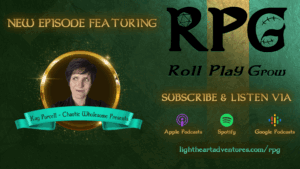
097: Community Management & Running a Production Studio with Kay of Chaotic Wholesome Presents
Introduction In this episode, we chat with Kay Purcell, co-founder of Chaotic Wholesome Presents, a TTRPG production studio known for creating engaging stories and
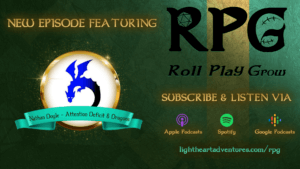
096: Making a Map Puzzle Cube with Nathan of Attention Deficit & Dragons
Introduction In this episode, we sit down with Nathan Doyle, the game designer behind ‘Attention Deficit and Dragons’. Nathan discusses his early gaming experiences,
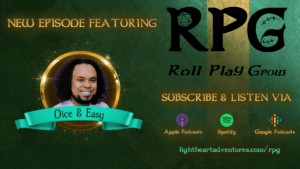
095: Celebrating 4 years of RPG & exploring the intricacies of content creation with Fondue of Dice & Easy
Introduction It’s the four-year anniversary of Roll Play Grow! Thank y’all so much for being here. This episode features an interview with Fondue, the

